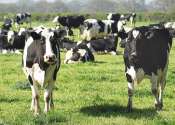'Giant' predator worms more than half a billion years old discovered in North Greenland
Fossils of a new group of animal predators have been located in the Early Cambrian Sirius Passet fossil locality in North Greenland. These large worms may be some of the earliest carnivorous animals to have colonized the ...









